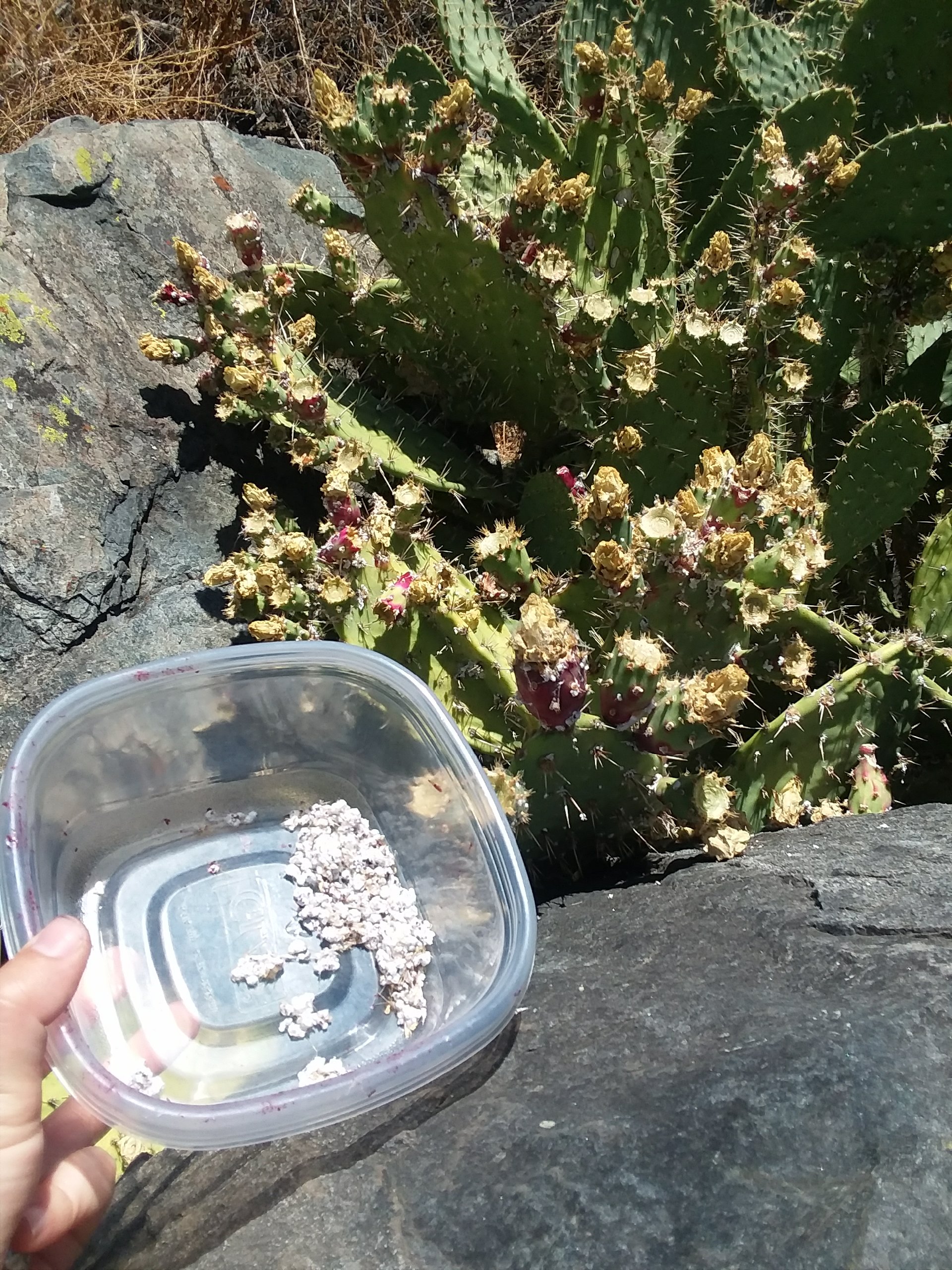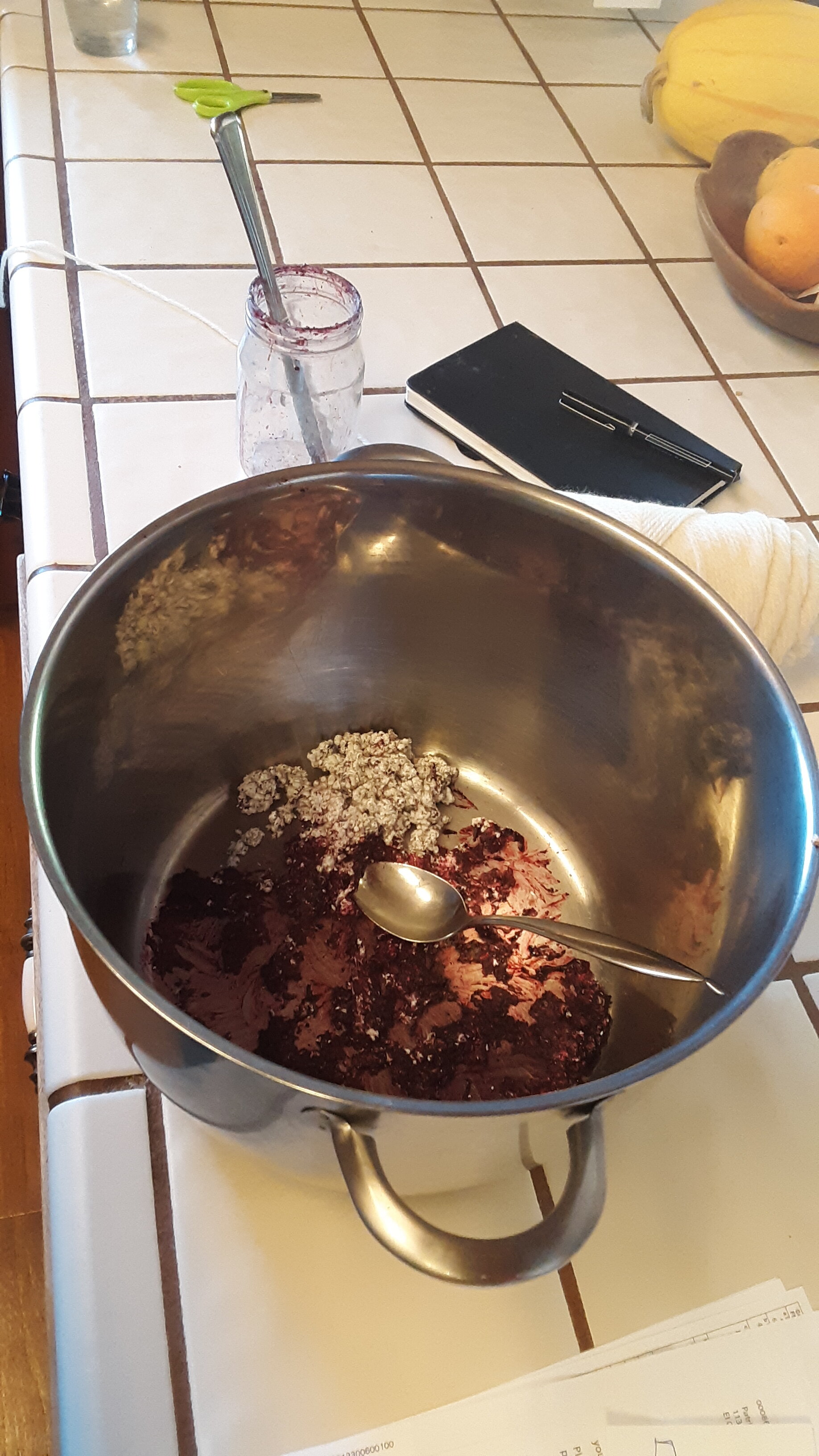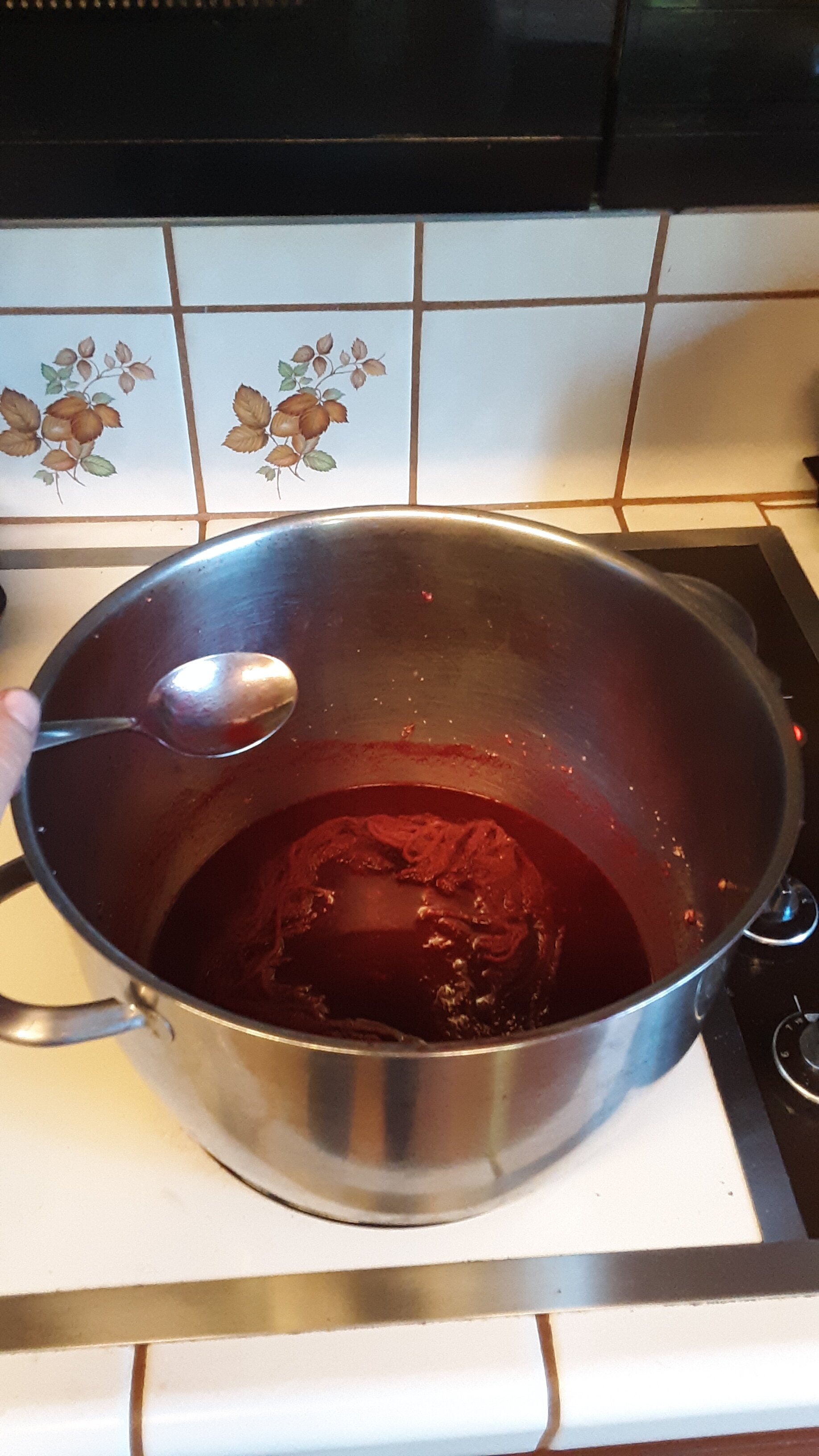Collecting the cochineal wasn't incredibly difficult, but it did take a long time and I didn't escape completely devoid of spines. In retrospect, wearing some gloves probably would have been a good idea!
Once I had collected about 3/4 of a cup from several different cactus plants, I walked home and got out the materials needed to start dyeing. I used:
Aluminum sulfate powder
white wool yarn
Two large stainless steel pots
baking soda
dish soap
cream of tartar
about a 3/4 cup of cochineal bugs
I was first introduced to the cochineal bug in Old Town San Diego as a kid on a class field trip. I remember our docent walked us over to a large Opuntia (paddle cactus), crushed one of the puffy white blobs stuck on a paddle, and said "This is what dyed the redcoats red." I was shocked to see that the fuzzy white blob had burst open, releasing a blood-like crimson ooze. Being a kid, I remember having lots of fun poking them with sticks after that, whenever I saw them.
Recently I've been trying to learn more about the historical uses of Californian flora & fauna. The story of how an insect from the Americas colored the coats of British soldiers is sadly a long story of colonialism, exploitation and trade, but the history of cochineal goes back much farther. Skilled Mayan and Aztec dyers used cochineal to create vibrant red textiles as early as the second century BC in what is present day Mexico.
I remembered about the cochineal bug while hiking at a nature preserve in El Cajon when I saw a cluster of them living on a Coastal Prickly Pear. I thought, why not try dyeing with those strange, fuzzy, white insects?
You should wear gloves if you do this, unlike me.
To start the dyeing process:
After harvesting about a half a mayonnaise jar full of cochineal, I took them home and started preparing them to use as dye. I got out a large stockpot and crushed the cochineal directly into the bottom. There is probably a more efficient way to do this. I know that commercially, cochineal bugs are dried out, then ground into a fine powder for dye. Since mine were fresh, I just improvised and used them as they were. After crushing them, adding water, and straining out all the white blob residue, I started preparing some yarn to dye.
I washed a small skein of white wool yarn with dish soap to remove any waxes or coatings put on it during manufacturing. Then I soaked the yarn in a separate pot with aluminum sulfate (alum) and hot water. This mordants the yarn and allows it to better absorb the dye it will come in contact with later. After that, I rinsed the yarn and put it in the dye pot! I also added about a teaspoon of cream of tartar to the dye to help brighten the color.
Crushing cochineal in the dye pot.
Wool yarn soaking in cochineal dye.
Taking yarn out of the dye bath after an hour of soaking.
After letting the yarn soak for about an hour, I took it out, wrung out the excess dye, and laid it in the sun to dry. The wool took the color really nicely! Next time I may experiment with some citric acid or lime to see if I can make different shades of red. Apparently certain additives react with the carminic acid in the dye, and can shift the color to have either more purple or more orange undertones. Overall though, this was a successful and fun experiment!










